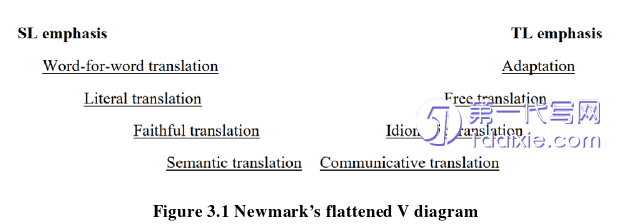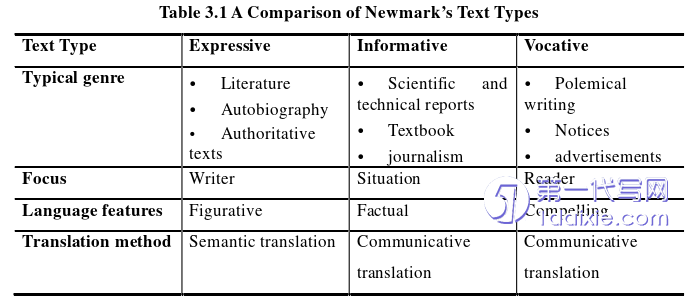本文是一篇英语毕业论文,译者通过本次实践发现,信息性文本也可能具有多种语言功能,因此译者翻译时应该具体问题具体对待,综合运用语义翻译和交际翻译策略,尽可能保证译文的可读性、保留原文的美学价值。本文所述翻译经验可能会对语言类教材翻译提供些许参考价值。
Chapter One Introduction
1.1 Introduction to the Source Text
The source text of this translation practice is the first and second chapters extracted from Jim Scrivener’s Learning Teaching-A Guide Book for English Language Teachers. It was first published in 1994 and then republished many times due to its wide popularity. What the translation practice referred to is the 2005 version reprinted by Macmillan Publishers. This book was introduced to China by Shanghai Foreign Language Education Press in 2002, but unfortunately there has been no Chinese version up to now. It has a specific guiding significance for English teaching in China, and can assist teachers in carrying out English teaching more actively and effectively. The part that the translator extracted mainly probes into some fundamental questions of what it means to be a teacher and what language teaching is working on. Also, some insightful discussion about the relationship between teaching and learning is highly inspiring for any teacher.
This source text is a textbook that tells readers how to teach effectively, but meanwhile, it also seems to be the writer’s diary of teaching in which he revealed personal feelings towards his career. It can be seen as a unique blend of genres, encompassing elements of a scientific textbook, a practical guidebook, a detailed work diary, and even a meandering essay. The sections pertaining to language teaching, classroom management, and language skill training are highly accessible, characterized by a logical flow and direct explanations. Conversely, when the writer delves into their own reflections and observations, figurative expressions and emotionally charged language come into play.

1.2 Significance of Translation Project
The introduction of professional and preeminent textbooks on practical methodology of English language teaching may propel domestic English education to reform and turn from traditional exam-oriented teaching to practical application. Foreign language teaching, especially English teaching, is an enduring topic in China, whose contribution to society is self-evident. However, with China gradually involving in global affairs and the demand for multiple interactions with the international community increasing, the traditional English teaching method at most domestic schools is no longer suitable for the societal requirements for foreign language talents. Although some reforms in terms of English teaching and testing have been undertaken in China, they turn out to have a minimal effect on learners’ ability to use it for real-world reasons. A survey on average English proficiency of university students shows that only 3.5% of them think their oral English is good enough, 71.1% think their spoken English is just on average or poor, and 76.3% think their daily communication ability in English is quite weak, especially when speaking to a foreigner (Ge, S.Q., Feng, Y & Ding, K., 2015). Accordingly, there is an urgent need to introduce some new and novel ideas that may facilitate English teaching.
Chapter Two Translation Process Description
2.1 Pre-translation Preparation
A thorough analysis of source text is the prerequisite of translation. Instead of having a quick look at it, the translator should do intensive reading to fully understand what the author is going to say, what are the stylistic features of the source text, and then, what the potential readers it addresses to before embarking on translating.
2.1.1 Parallel Texts Study
Reading parallel texts can help translators better understand the source language texts, thus helping translators to improve their translation quality. According to Li, a broad sense of parallel texts are any reference materials close to the source text, no matter whether they are in the form of source language or target language (Li, 2009).
The translator has engaged in sporadic reading within the realm of second language acquisition and English teaching methods before. However, during that period, the primary objective of perusing those texts was to acquire information, without any inclination towards translating them. Fortunately, this preliminary exposure to such literature has facilitated the accumulation of background knowledge, enabling the translator to better comprehend the content of the current book.
2.2 In-Translation
The translator meticulously devised a project timeline to ensure the smooth progression of the translation endeavor. The source text to be translated encompassed over 20 thousand words, surpassing the actual requirements of a thesis for MTI program. Adhering to the designated schedule, the translator proceeded with the task at a pace of 1000 words per day. This rate, although slower compared to that of a professional translator, was necessary as the translator consistently paused to conduct extensive cascaded research. These pauses were vital to guarantee the careful selection of appropriate words and the accurate understanding of complex sentences. If the materials to be translated are already in front of us, then the faster the speed is, the lower the quality will be; conversely, the higher the quality is, the slower the speed will be. This is a common contradiction in translation (Xia, 2007). Thus, the translator intentionally reduced the speed in order to ensure a high-quality translation during the initial draft.
Also, to improve translation efficiency, the translator made good use of machine translation. Based on the translator’s practice, the credibility of translation results given by different machine translation platforms varies greatly due to various factors like whether a particular corpus is embedded or not or what genre of language the source text is written. What the translator did was to translate the source text by himself at first, and then to compare the various results of machine translation with his own version, so as to minimize the preconceived influence of machine translation on translators. If there was a big divergence among them, the translator would do in-depth research for every word and finally decide a translation result.
Chapter Three Theoretical Framework ............................... 9
3.1 Newmark’s Text Typology ................................... 9
3.2 Newmark’s Translation Strategies ............................ 10
Chapter Four Case Analysis ........................................ 14
4.1 Lexical Level...................................... 14
4.1.1 Terminologies .................................. 14
4.1.2 Polysemic Words ..................................... 20
Chapter Five Conclusion ....................... 36
5.1 Major Findings ...................................... 36
5.2 Limitations and Suggestions .......................... 37
Chapter Four Case Analysis
4.1 Lexical Level
Newmark believes that the most challenging thing in translating are to do with lexical resources rather than grammar. For instance, words, collocations and fixed phrases or idioms are the one that is hard to translate (Newmark, 2001b). We study the scope of semantic differences between English and Chinese lexis from the aspects of their conceptual, stylistic, emotional and collocational meaning. Only if we know such differences and accurately understand the original text can we decide the most appropriate translation strategy (Zhang, 2016). As the SL text involves various terminologies in linguistics, pedagogy, and second language acquisition theory, different strategies should be taken to decipher its meaning in target text.
4.1.1 Terminologies
Terminology, generally, refers to a group of specialized words and respective meanings in a particular field. A term can be a word, compound word, or multi-word expressions that have specific meanings in some specific texts, which, sometimes, may deviate from common meanings that the same words have in other contexts and in everyday language. Newmark states that the central difficulty in technical translation is usually the new terminology (Newmark, 2001b). Terminology translation is a multi-disciplinary issue and a frontier topic in terminology construction. When discussing the translation of terms, we should first pay attention to the agreed attributes of terms. In term translation practice, the translator should adopt relevant approach to cope with the translation of standardized terms and non-standardized terms. As for the standardized ones, the first thing is to abide by the existing agreement, that is, the promulgated standardized text. As for the latter, we can consider some unified measures (Zheng, 2012).

Chapter Five Conclusion
5.1 Major Findings
It is of great importance to make adequate pre-translation preparation including source text analysis, parallel text study and translation tools. A meticulous source text analysis, such as detailed research into the stylistic features, purpose of writing, writing background of SL text, and author’s profile etc., can effectively help the translator to decide what text type the source text belongs to and whether the target text should mainly place emphasis on semantic translation strategies or communicative translation strategies in the translation process. Except that, necessary translation tools are also helpful to smoothly make progress.
Newmark’s translation theory, namely the text typology, semantic translation and communicative translation, can effectively serve as guidance to make decisions on what specific translation methods should be adopted when translating informative text like textbooks. As most texts have a mixture of various functions because of different cultural backgrounds and even a text has more than one pragmatic function in the same text, the translator should take an integrated and comprehensive strategy rather than mechanically stick to the doctrinal approach. In this translation report, since text characteristics of the SL text Teaching Learning are quite different from generic textbooks that are carefully worded and rigorous, the translator finds that it is more practical to take a flexible combination of semantic and communicative strategies.
reference(omitted)
